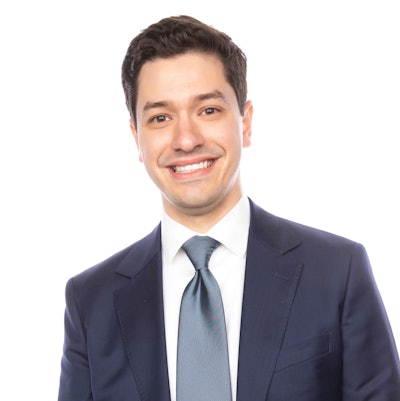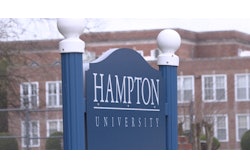Twenty months ago, in June of 2022, New Jersey City University (NJCU) declared a financial crisis. Andrés Acebo
Andrés Acebo
Its then-President Dr. Sue Henderson announced that she’d be stepping down. It was predicted that the public Hispanic-serving institution (HSI) would face a structural operating deficit of over $22 million, a forecast that officials worried would hurt enrollment and other aspects of the school. The school also asked the state to help with $10 million.
Now, things are looking much better for the Jersey City school. Financial rating corporation Moody’s changed its assessment from ‘negative’ to ‘stable.’ Spring graduate, new undergraduate, and undergraduate transfer new enrollment are up by over 25% compared to last year.
And the school is even “conservatively forecasting” a “break-even balanced budget for fiscal year 2024,” according to NJCU President Andrés Acebo.
“We're very proud that, given the fact that this was an institution that in five years was downgraded five times by rating agencies, an institution that just 20 months ago had declared fiscal exigency facing a $20+ million forecasted operating shortfall, our rating agencies has upgraded us to a stable outlook,” Acebo told Diverse.
The pathway to get to this point has had its fair share of hard choices. And the school also still has a way to go.
After the school declared financial emergency, it also adopted budgets and plans to realign the trajectory of the school, said Acebo, who previously served as NJCU’s executive vice president and university counsel.
Acebo – along with chief strategy officer-turned-acting president Jason Kroll – assessed the situation, bargained with labor unions, and made “difficult and painful decisions” that reduced the predicted deficit by approximately $10 million, according to Acebo.
These plans were subsequently executed when Acebo took the helm as interim president of the university in January 2023.
Some of those difficult decisions had to do with cutting employees – faculty and professional staff – and downsizing NJCU’s academic offerings. Many senior executives were either let go or departed via “voluntary separations.” Some roles and departments – such as the divisions of administration and finance or student affairs and enrollment management – were consolidated.
And a sizable portion of NJCU’s distinct degree and certification programs were either put on hiatus or sunset – set to be phased out gradually – a move that Acebo said came with “the layoffs of tenured faculty and the non-reappointment of non-tenured faculty.”
Some that were sunset included programs in environmental science, physics, economics, and graduate-level music education. In total, 43 undergrad programs, 28 graduate programs, one doctoral program, 22 minor programs, and eight certificate programs were sunset, according to NJCU Chief Communications Officer Ira Thor.
Approximately 50 retrenchments – layoffs, cuts, and retirements – took place, according to Dr. William Calathes, longtime NJCU professor of criminal justice and chief negotiator and former president of AFT 1839, the local branch of the American Federation of Teachers union organization. AFT 1839 represents faculty and professional staff.
“There was a reorganization of rank-and-file and divisional leadership,” Acebo said. “We began the exercise of evaluating the academic portfolio that ultimately concluded with us – once I became president – sunsetting about 30% of our existing academic portfolio at the time.”
The assessments that led to the sunsetting of these programs factored in the “mission, margin, and market of those programs,” and looked at the return-on-investment of these programs for both the school and its student populations, Acebo said, adding that it was a process that involved working closely with organized labor and the faculty senate.
Acebo noted that, for nearly 70% of the programs designated for sunsetting, the decisions to do so were not appealed by the school’s faculty senate.
“We knew that we had to suffer some losses,” Calathes said. “Enrollment was going down. And we knew that the student population that we once had and the allocations that we were given from the legislature were not going to be matching the ability to provide the kind of academic programs that we had in the past."
Since these faculty and staff reductions were made, however, NJCU has been able to bring back almost half of the faculty and staff who were initially cut, rehiring about 25 people in their old positions or new ones, according to NJCU.
According to Acebo, this “claw-back” has always been part of his plan.
“While we made it a specific sustainability-focused decision on sunsetting and eliminating some academic programming that certainly, painfully, and unfairly in some circumstances impacted people's careers, we were very deliberate in trying to mitigate that without losing individuals that certainly had a lot of heart and talent still to give to this institution's mission,” Acebo said.
Throughout this process, Acebo has made shared governance and collaboration with organized labor central, much to the approval of the union members. 95% of NJCU’s workforce is unionized, with AFT 1839 being the largest of the school’s unions.
Prior to Acebo’s involvement with the university, relations between faculty and the last administration were tense and adversarial, Calathes said.
“There was absolutely no respect for the union,” said Calathes, also a member of the faculty senate. “There were decisions made that, in terms of affecting the direction and the future of the university, along with its labor, were quite detrimental. ... When [Andrés Acebo] first came onto the campus, I could see that he was a different sort of individual. He really wanted a relationship with labor.”
One example of that was Acebo’s choice to streamline administrative roles before touching faculty and staff ones, Calathes said.
Acebo and the leadership team at the time worked with faculty to determine which positions would go, although consulting with faculty had not been a requirement, Calathes said.
"Once the university declared fiscal exigency, they had the legal right to just indicate the number of people that were going to be laid off. Done. Gone. They didn't have to sit down and negotiate with us,” Calathes said. “And they did. We sat down for months, working out the details. … We really are a model of labor management relations with public universities.”
As it currently stands, NJCU continues its effort to revitalize and reshape itself for the better. In June 2023, the school formed a partnership with Hudson County Community College for HCCC|NJCU CONNECT, a dual-admission initiative that leads to degree pathways. In the same month, the state appropriated about $10 million in funding for NJCU in its 2024 budget, according to ROI-NJ.
“Last year we urged the state to step up and fund NJCU—and they did," AFT President Randi Weingarten said in an email statement. "Interim President Andrés Acebo deserves huge credit for working with stakeholders to turn the school around and put it on a path to fiscal success. NJCU hands thousands of first-generation students a valuable diploma and gives them a shot at a secure, middle-class life—and we are proud that legacy is, for now, secure.”
And just this month, the school announced its first academic master plan.
Come this fall, NJCU will also begin accepting from transfer students courses on the New Jersey Council of County Colleges list for general education credit. One of the goals is to make transferring easier for first-generation and non-traditional students, Acebo said. This comes as part of NJCU’s mission to recognize its student demographics and become “the most-transfer friendly institution” in New Jersey.
“The Northeast in particular is heading towards an enrollment cliff,” Acebo said. “The headcount chase and aggressive discounting and the like are systemic and structural challenges and, at this point, [have] proven unsound business approaches to higher education.
“So we've deliberately sought to disrupt the way the business operation and model have been longstanding at this institution and most of public higher education in the state.”
The school still has progress it has to make and “outstanding challenges” to address, however. As of June 2023, it still had total outstanding debt of $244 million, ROI-NJ reported. Thor clarified that most of that debt is pension liability.
“We will be poised to enter 2025 in a much stronger position,” Acebo said. “[We will still] have to tackle some of the more long-term challenges, for instance our debt obligations and debt load as an institution and our capital needs.”
Calathes is hopeful. Like Acebo, he is optimistic about the school's future.
“We have a long way to go [in terms of] fully recovering,” he said. “But collectively I think we're going to get there for sure.”















